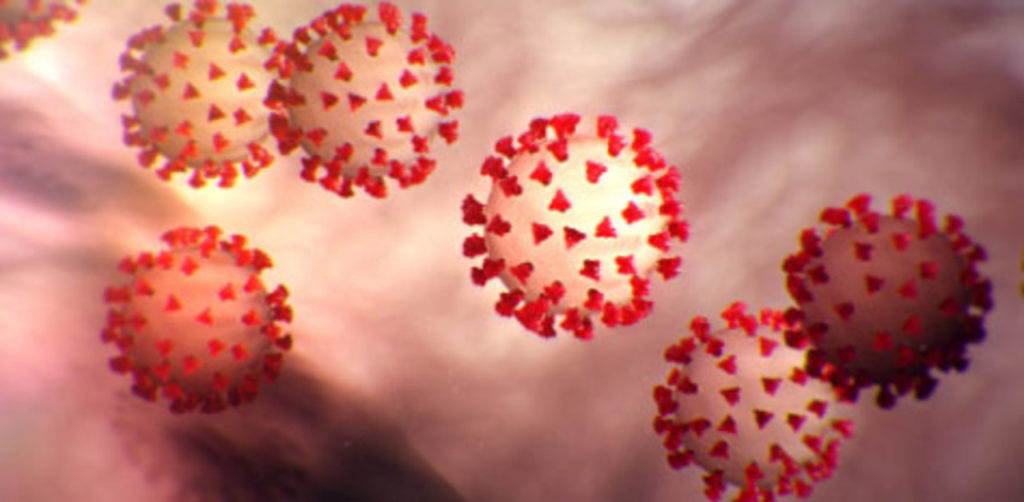The novel coronavirus doesn’t seem to mutate that much, despite the fact it has infected over 450,000 people. This means there’s a good chance that a vaccine for SARS-CoV-2 — when it is ready — will only have to be taken once, perhaps offering immunity for a lifetime.

Technically, viruses aren’t alive because they are obligated parasites that require a host organism in order to replicate — at least that’s the opinion of many biologists.
Despite their inability to self-replicate, viruses are subjected to the same evolutionary pressures of natural selection as living organisms.
The end-game of any virus is to evade the host’s immune system and infect cells in order to commandeer their cellular machinery for their own purposes: the replication and the infection of new hosts.
Whenever a virus makes a copy of its genetic material, there’s a tiny chance an error might occur, causing a mutation. Some of these errors are actually helpful, allowing a host to infect more hosts or, perhaps, an entirely different kind of host, allowing the virus to jump species.
Pressured by natural selection, some mutations are kept and transmitted to the next generation if the virus is successful thanks to them. If the mutation hinders the infectious potential of the virus, the mutated population will eventually wither and die, making room for better-adapted copies.
To give you an example, think of a virus that has mutated such that when it infects a human, she dies within hours. Although this might sound like a nightmare, this kind of mortality would make the virus extremely inefficient. By killing its host so quickly, the mutation won’t have time to spread to other people. Since viruses can’t replicate by themselves, it will be wiped away, its genetic legacy vanished.
Other viruses are much more tricky. RNA-based viruses (rather than DNA), such as those that cause the flu, AIDS, and even COVID-19, generally mutated fast because errors creep up much more frequently during genetic copying compared to DNA virus.
For instance, the previous pandemic from 2009 was caused by influenza A H1N1 (swine flu). The virus has muted heavily since then and antibodies that were activated by previous exposure to older strains of H1N1 do not recognize the new strain. Naturally, the host gets sick.
This explains why scientists have to modify their flu vaccines constantly and we need to take a flu shot every season in order to protect ourselves.
Some researchers have expressed concerns that the novel coronavirus might also become seasonal, meaning we’d need a yearly vaccine for it — just like we do now with the flu.
Fortunately, SARS-CoV-2 seems to have a very low mutation rate due to its error correction genetic machinery. Speaking to the Washington Post, Peter Thielen, a Johns Hopkins molecular geneticist, said that scientists have studied over 1,000 samples of the virus from all over the world. They found only 4 to 10 genetic differences between the strains that infected people in the U.S. and those from Wuhan, China, the epicenter of the pandemic.
“That’s a relatively small number of mutations for having passed through a large number of people,” Thielen told the Post. “At this point, the mutation rate of the virus would suggest that the vaccine developed for SARS-CoV-2 would be a single vaccine, rather than a new vaccine every year like the flu vaccine.”
Under these conditions, a potential coronavirus vaccine would be administered once, as we do now for measles or chickenpox, offering immunity for a substantial amount of time — perhaps a lifetime.
The dire situation in Spain and Italy, where case mortality rates went well and beyond those seen in Wuhan, has led some to speculated that these populations are dealing with a more aggressive mutated strain of coronavirus.
However, the latest research suggests that this isn’t the case. The virus seems to be essentially the same in the United States, China, and Italy. The different mortality rate is most likely due to the country-specific circumstances. For instance, Italy has 1 in 4 people over 65 years of age, the most vulnerable age group for COVID-19. Their healthcare system has also been overrun with an influx of infections.
As the virus infects more and more people, things might change. Although it seems to have a small mutation rate, the coronavirus might make up for it in volume. Between 60% and 80% of the world’s population could eventually get infected with SARS-CoV-2, epidemiologists say, if the virus is left unchecked. With these many hosts at this disposal, the novel coronavirus might look quite different a year from now.
Scientists are now working on over 30 vaccine candidates for SARS-CoV-2. Despite their best efforts, there won’t be one for at least 12-18 months. Until a vaccine is ready to be deployed, the best way to prevent getting sick with COVID-19 is by practicing good hygiene and social distancing.



